This section gives an overview on regular maintenance. More detailed information on coat care, grooming and scissoring/clipping can be found in our Grooming section.
Whilst a Lagotto coat does not need daily attention, it is advisable to pass a metal comb through it regularly in order to detect any areas that are starting to matt.
Special attention is needed if you intend to show your dog as matts can appear at any time, but especially in the areas behind the ears, around the muzzle, around the chin and on the legs/under the armpits. Guidance on show preparation is available.
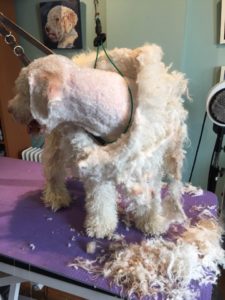
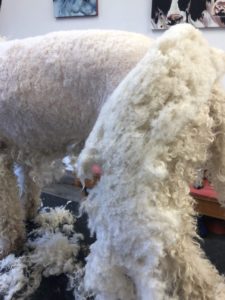
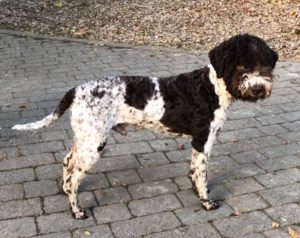
Beware of using a slicker brush as it will remove a lot of the undercoat which is a vital component of the Lagotto.
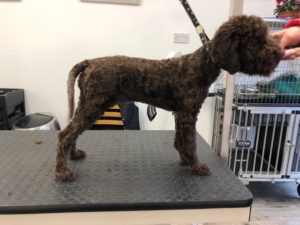
Going forward, a clip-off is recommended once or twice a year to keep a coat, especially a show coat, in good condition.
The Lagotto’s nails are long and curved (hence its natural ability to dig for truffles), and the quick is therefore longer than in some other breeds. Always err on the side of caution and take off the minimal amount of nail (more can always be taken off later but a Lagotto who has had quick removed to the point of bleeding will remember it for longer than his/her owner!). Take a look at the notes and diagrams by Louise Ferguson in the Grooming section.
It is easiest if you are able to get your Lagotto used to having its feet and nails touched from an early age, but with an owner’s gradual persistence and determination it is possible to persuade a sensitive Lagotto to accept nail clipping.
As a non-shedding breed, the hair inside the Lagotto ear grows constantly. Whilst some hair is healthy, indeed desirable, to protect the Lagotto from its natural ability to work in water in all seasons, hair inside the ear that is left to build up will prevent the ear from draining properly and wax will start to accumulate. Excess hear should be removed.
It is wise to get your Lagotto used to having its ears inspected from an early age so that you can check for any problems.
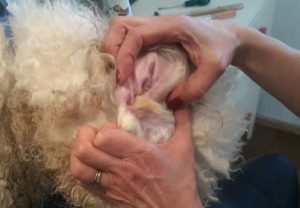
Lagotto have a slight discharge from the corner of their eyes which if left would leave a solid crust. This is nothing to worry about but is best removed on a regular/daily basis.
Whilst a Lagotto puppy will come with advice and information on worming to date, follow-up worming information and advice will be available from your vet.
Information on fleas/ticks and other parasites will be available with your new puppy pack, but please take advice from your vet on any future requirements.